Bloodhounds, the brilliant, unique dogs as strong as horses: 'It’s like having a toddler — but one that can eat iPads'
Far from snoozing on a porch all day, bloodhounds are highly active pack-hunting dogs that require ‘slobber cloths’ when in company, discovers Katy Birchall.

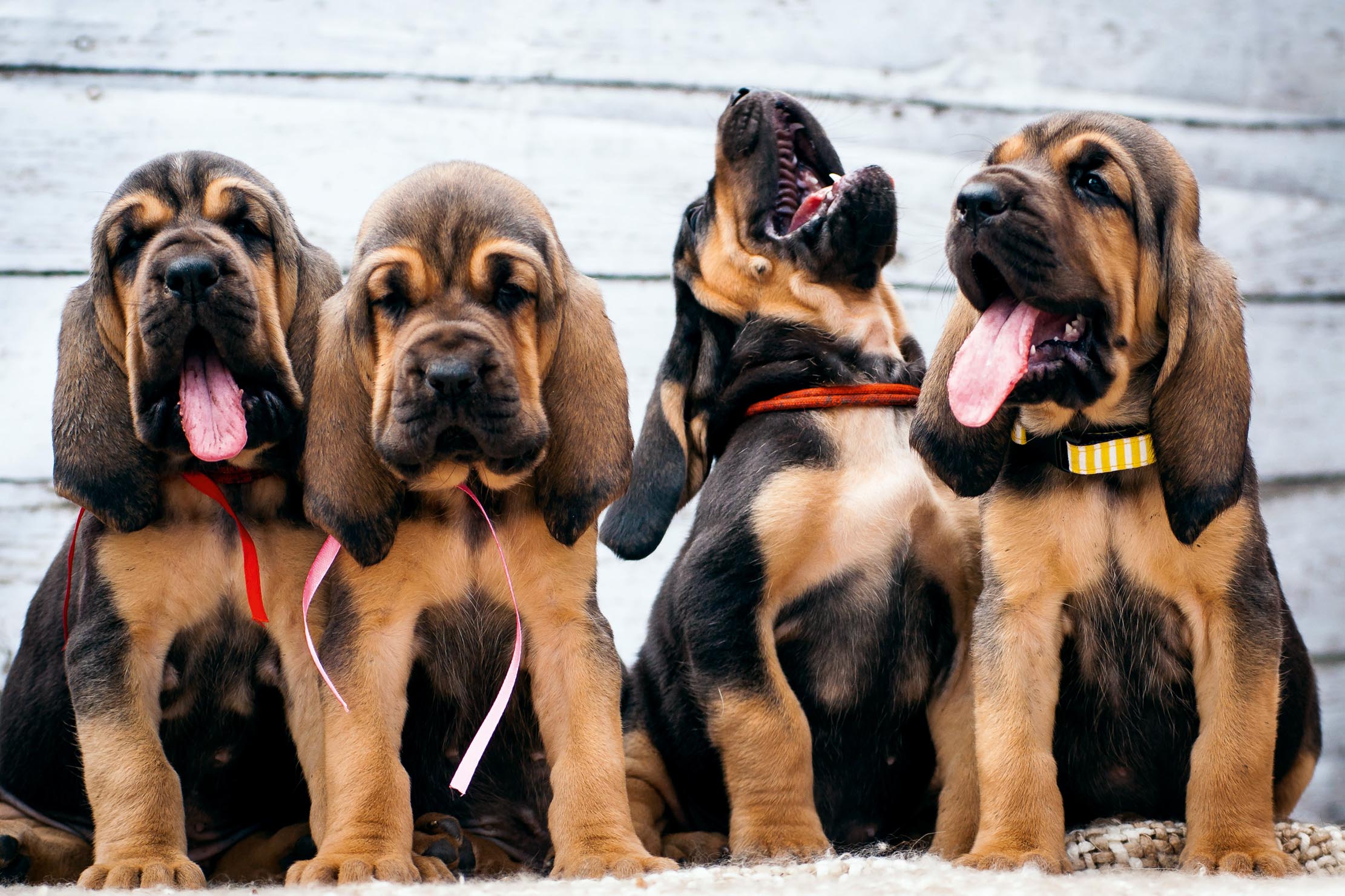
Strikingly handsome and with an unmatched sense of smell, the bloodhound is a remarkable working dog, both in appearance and ability. The noble expression of this tall, muscular, long-eared hound, ‘characterised by solemnity, wisdom and power’, as worded by the Kennel Club (KC), befits a breed with such a rich and ancient heritage.
Recorded in Britain as early as the 14th century, the bloodhound has been an esteemed hunting companion to nobility, a formidable tracker of poachers and criminals and a lofty muse, its dignified coun- tenance and trailing capability romanticised in art and literature. This notable ancestry makes the bloodhound’s place on the KC’s vulnerable list all the more disheartening, with only 36 pups registered in 2020.
‘They were certainly a prestigious breed in previous centuries,’ affirms Keith Long, chairman of the Bloodhound Club. ‘The bloodhound has the honour of being the first breed to feature in the KC Stud Book and is one of the few breeds where the same stock is seen in both show and working arenas, ensuring they are fit for purpose. It is steeped in history and part of the pleasure of owning the breed is the sense of its ancientness.’

Acquiring his first bloodhound as a teenager, Mr Long has never looked back, although he admits there are certain drawbacks to the breed — a ‘slobber cloth’ is an essential accessory, should an owner want to keep their friends. However, Mr Long insists the bloodhound’s qualities far outweigh the drool hazard.
‘They are a joy to own, affectionate with both humans and other dogs,’ he enthuses. ‘Whenever you’re out with your hounds, they will have their noses to the ground, following the scent of those who have gone before. I’ve spent hours in the field handling, assisting, judging or spectating and am still in awe of their ability to find their human prey.’
The bloodhound is believed to be descended from the St Hubert hounds, brought over to England in 1066 by William the Conqueror. In John Caius’s text Of Englishe Dogges (1576), bloodhounds are established as ‘the greater sort which serve to hunt, having lips of a large size and ears of no small length’, going on to detail their superior ability to trail man, in particular tracking cattle thieves in the Borders — they became known as the ‘sleuth hound’, popularised in tales of cross-Border feuds and romances such as the work of Sir Walter Scott
‘And hark! and hark! the deep-mouthed bark Comes nigher still, and nigher! Bursts on the path a dark Bloodhound, His tawny muzzle tracked the ground, And his red eye shot fire.’From ‘The Lay of the Last Minstrel’ by Sir Walter Scott
By the early 1800s, numbers had dwindled and the breed was largely saved by the introduction of dog shows in 1859. The majestic look of the bloodhound — the large, narrow head, heavy wrinkles and soulful eyes — appealed to those in the show ring and caught the attention of eminent artists, Sir Edwin Landseer in particular.
Exquisite houses, the beauty of Nature, and how to get the most from your life, straight to your inbox.
Working trials for the breed were introduced in 1898 and continue to this day, consisting of four stakes: novice, junior, intermediate and senior. Covering a vast area of countryside, a line is walked by someone who leaves behind a scent article, such as a glove, on a flag — the hound is later brought to the flag to follow the natural scent of the walker. For a novice, the trail is a mile long and half an hour cold, whereas senior hounds must tackle a three-mile trail that is two hours cold.
Only five bloodhounds in history have won the title of dual champion, taking the top spot in both the show ring and working trials. One of them, Brumbies Dulcimer, belonged to Sue Emrys-Jones of Marksbury Bloodhounds. ‘Dulcimer was absolutely super,’ recalls Mrs Emrys-Jones. ‘She was a nice-looking hound and loved her hunting. She’s the only bitch to have won dual champion.’
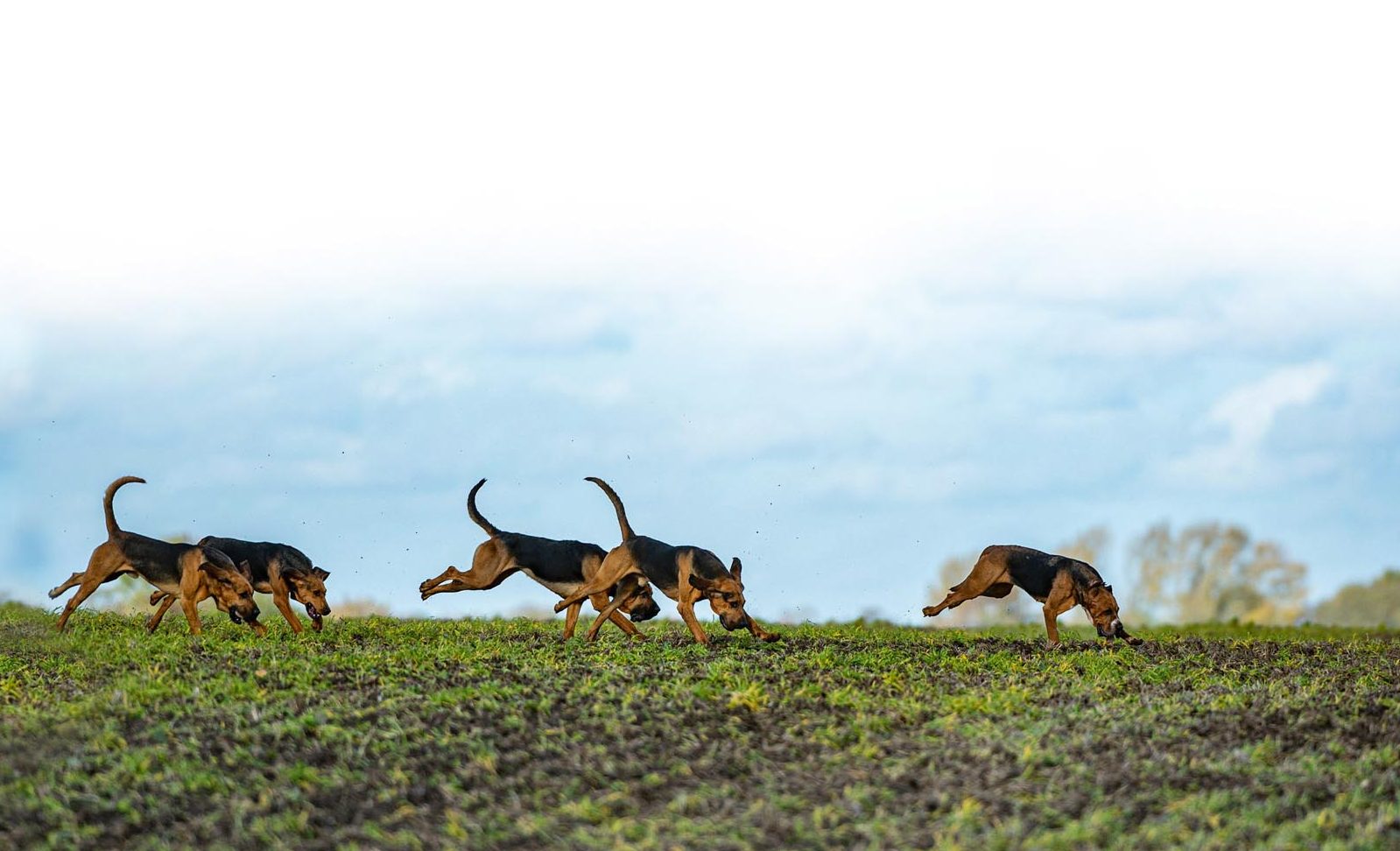
An advocate of the breed for more than 30 years, Mrs Emrys-Jones has lost count of the number of bloodhounds she’s owned. ‘They like companionship and I’m used to having up to 10 hounds at once, so I feel guilty only having one at the moment,’ she says. ‘There’s no grey area with a bloodhound, either you can live with one or you can’t. They’re untidy, not particularly obedient and need a lot of exercise. If they’re bored, they will chew.’
Tracie Howie, owner of seven bloodhounds including two puppies, concurs: ‘They’re partial to guttering, remote controls, phones, reading glasses. You need a good sense of humour. It’s like having a toddler — but one that can eat iPads.’
Accrediting the breed with giving her a ‘new lease of life’, Mrs Howie was instantly smitten with her first bloodhound, Daya. ‘That was when the love affair started. She was a real diva — they’re characters; a brilliant, unique dog. We walk about three hours a day and I take them all together,’ she says, confirming that stops can be par for the course, so that fellow walkers can admire the pack.
‘You can’t risk taking them off lead. If they get on the scent of something, nothing will distract them. I’ve almost been pulled into a ditch before — there’s no strength like that of a bloodhound when it bolts. It’s like holding onto a horse.’
Six facts about bloodhounds
- The first recorded use of ‘bloodhound’ appears in the 1350 poem William of Palerne or William and the Werewolf
- During the 16th century, if a man refused to let a trailing bloodhound in pursuit of a thief enter his house, he was held to be an accomplice
- In 1888, two bloodhounds, Barnaby and Burgho, were trialled by the Metropolitan Police to assist in hunting Jack the Ripper, yet despite successful demonstrations, the hounds weren’t deployed in the case
- Sherlock Holmes creator Sir Arthur Conan Doyle was greatly inspired by the breed’s sleuthing potential, often alluding to it in his work — in The Sign of Four, Holmes himself is likened to a ‘trained bloodhound’
- Queen Victoria owned and showed bloodhounds, as did the first patron of the Kennel Club, the Prince of Wales, later Edward VII
- Fred, a Tennessee sheriff’s bloodhound, made headlines in 2021, when he successfully tracked a six-year-old girl to an abandoned shed — a month after she’d disappeared
For Rob Manley and Evelyn Burnside of Houndseeker Bloodhounds, it was love at first sight when they spotted the breed at the Midland Game Fair — they now share their home with 14 of them. ‘They’re hard work, but make wonderful pets,’ Miss Burnside enthuses, confessing that their bloodhounds enjoy sofa privileges. ‘Sometimes, we end up on the floor, but we wouldn’t have it any other way.’
Although Miss Burnside’s hounds enjoy outings to the beach — ‘some will try to drag us into the sea’ — it’s in the field where they’re most at home. ‘Watching them pick up the scent to be tracked, continue to work that scent and get to the end of the line, even in the most atrocious of weather conditions, is so rewarding,’ she says.
All of the dogs compete at trials, including a rescue whose previous owner couldn’t cope. ‘After socialisation and training, she soon showed that she was a lovely hound who had simply been in the wrong environment,’ Miss Burnside explains. ‘Bloodhounds require a special home with people who understand the breed — they are a large, strong-willed and clever dog.’
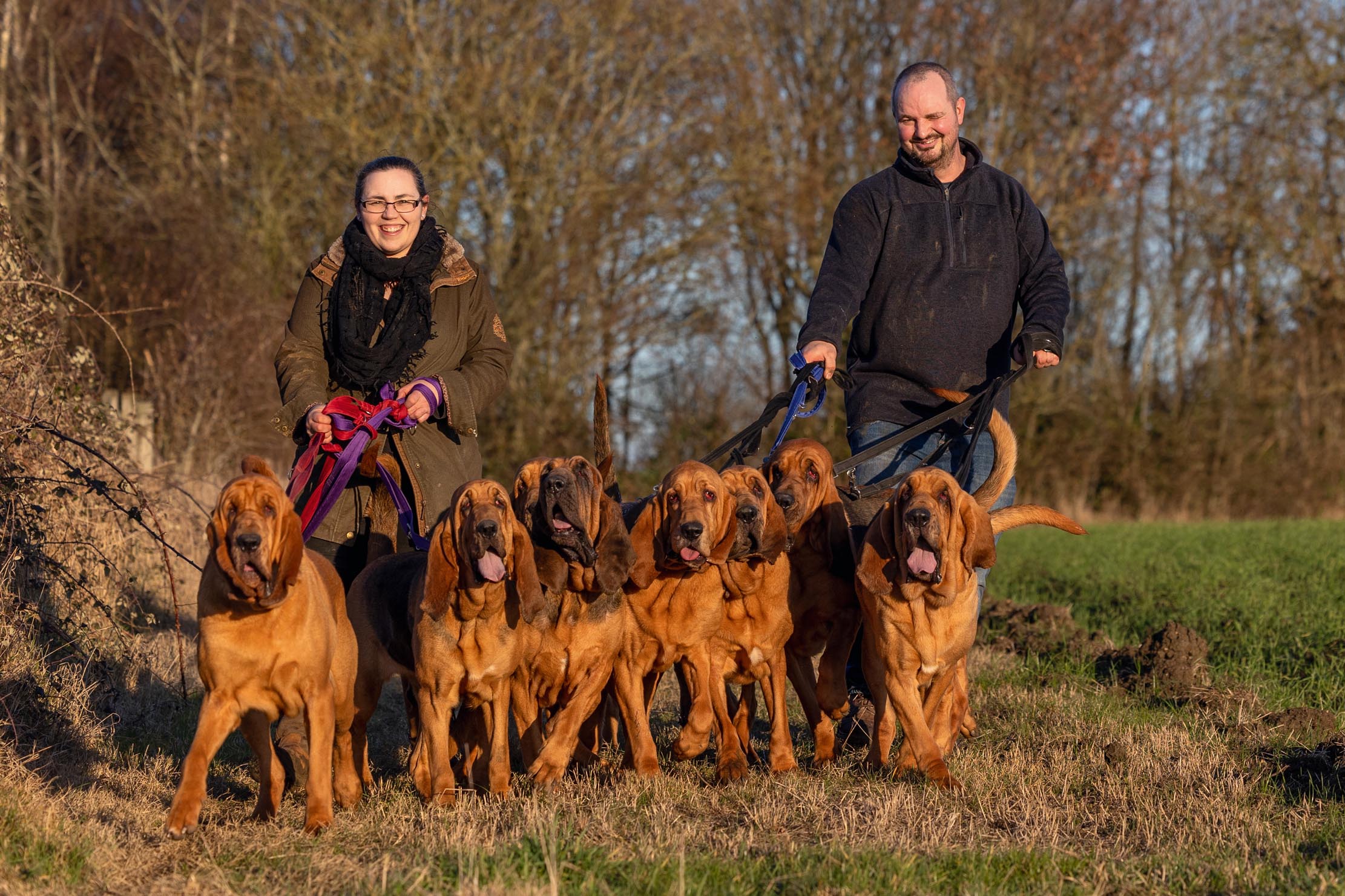
The Bloodhound Club secretary, Sam Clark of Farlap Bloodhounds, emphasises that thorough research is essential for prospective owners. ‘The KC recommends buying a puppy from a breeder on its “Assured Breeder Scheme” and that bloodhounds are BVA scored for hips and elbows, as well as BVA eye tested. Responsible breeders also do heart testing and testing for degenerative myelopathy as routine,’ she outlines. ‘There is a great misconception that it’s a lazy breed that sits on American-style porches, quietly snoozing — this couldn’t be further from the truth. They are a highly active, pack-hunting breed and come with all the characteristics you’d expect from such traits.’
After one of her dogs helped to locate a neighbour’s pet gone astray, Miss Clark founded K9 Search Dogs, a charity based in the South-West offering the bloodhounds’ assistance in tracking down missing dogs. ‘Training is almost identical whether hunting human or dog, but I prefer to use different hounds for different quarries to reduce the risk of changing lines,’ she explains.

Miss Clark is proud to report many success stories, including the tale of a missing beagle that was tracked by her hound to the cliff edge of a flooded quarry. ‘In a moment of rather foolish bravado, my partner used ropes to scale the quarry face to a tiny ledge, where the poor beagle was shivering after being stuck for 24 hours — we got the dog up safely, back to the very emotional owner waiting at the top.’
For further information on bloodhounds, visit www.thebloodhoundclub.com ; for more on K9 Search Dogs, visit www.k9searchdog.org
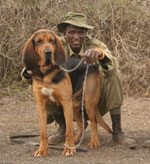
English bloodhounds help track Kenyan poachers
English bloodhounds have been flown out to Nairobi to help local trackers in the fight against poachers
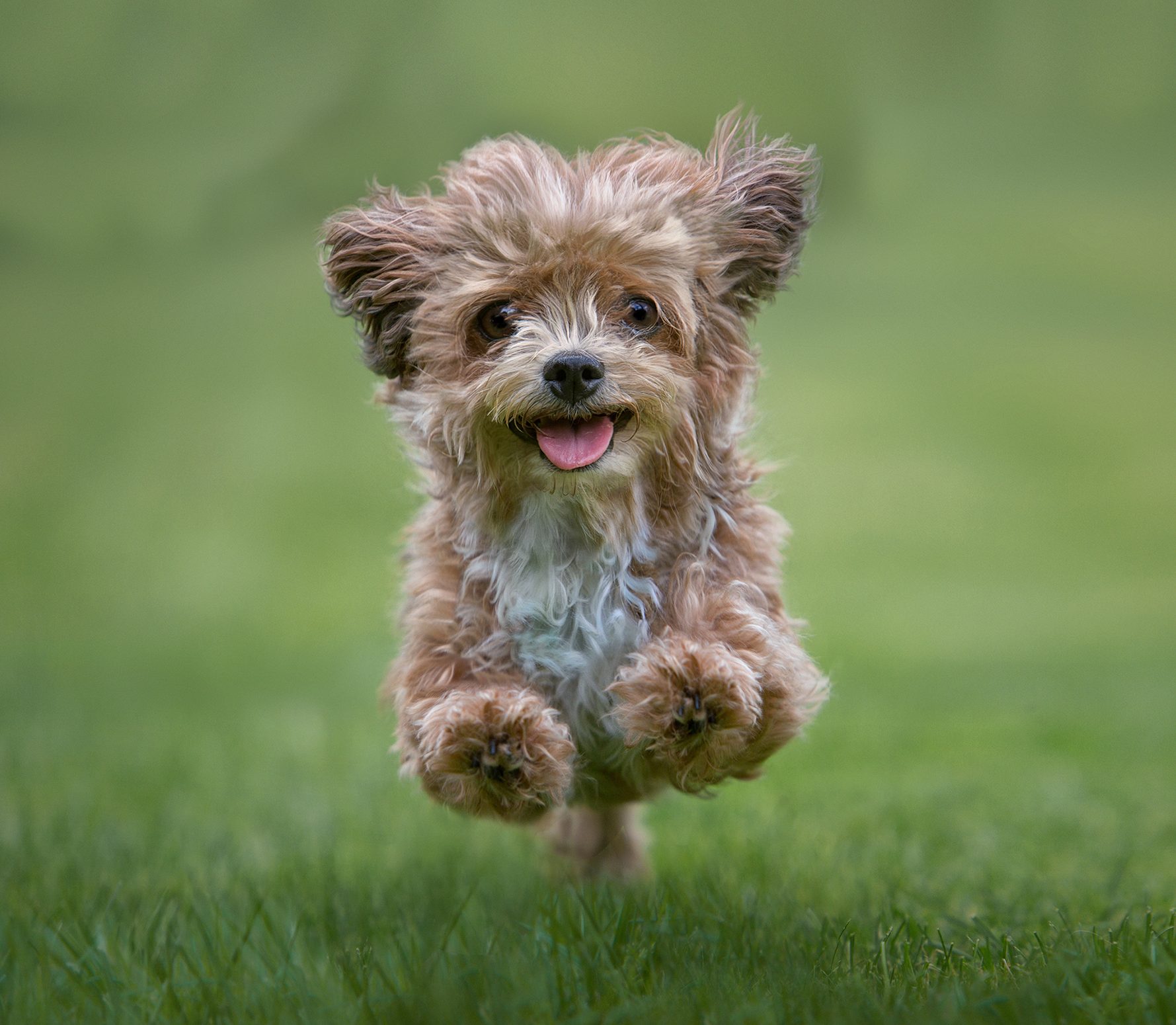
Credit: Getty Images/500px
The top 20 cutest dog breeds in the world, ranked according to science
Ranking the cuteness of dogs? You might as well rank the beauty of flowers. Yet a study has claimed to
Katy Birchall is a journalist and the author of several young adult and teen novels, including The It Girl series and the Hotel Royale series. She has written a retelling of Jane Austen’s Emma for the Awesomely Austen series and the Netflix spin-off novel Sex Education: The Road Trip. She is also the author of several romantic comedies for adults including The Secret Bridesmaid and The Wedding Season. She writes romantic fiction for young adults under the name Ivy Bailey, romantic-comedy under the name Katrina Logan, and romantic sports fiction for adults under Katherine Reilly. She lives in London with her husband, daughter and rescue dog.
